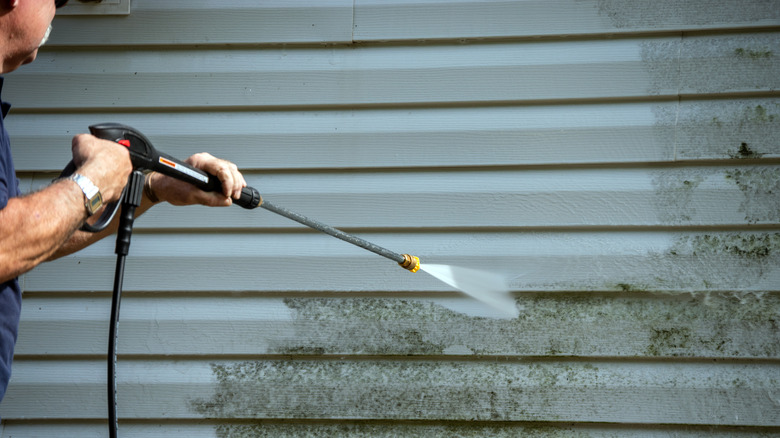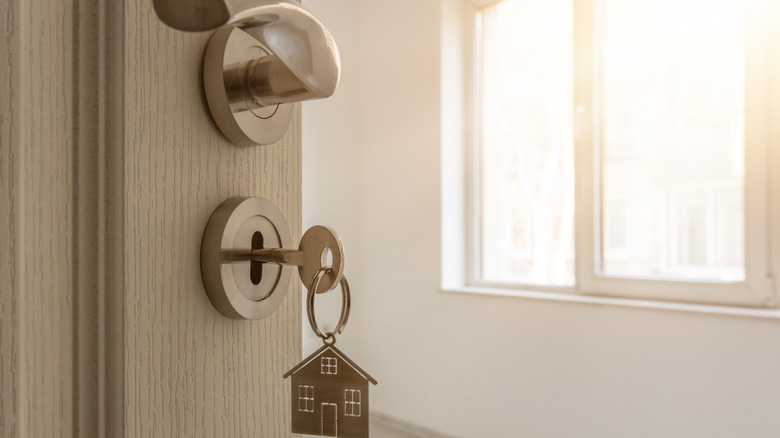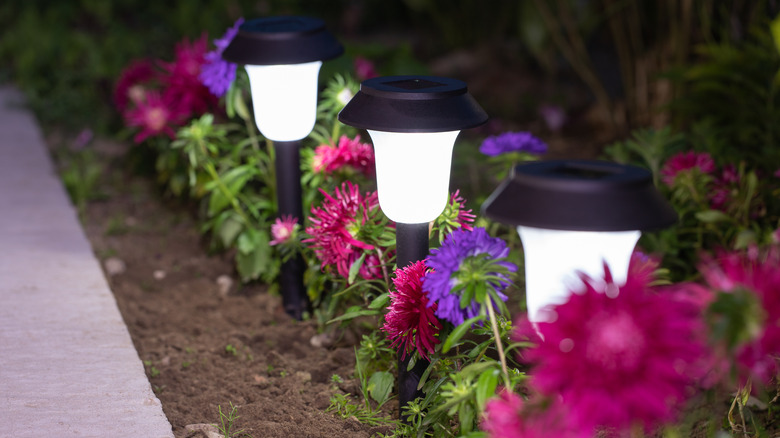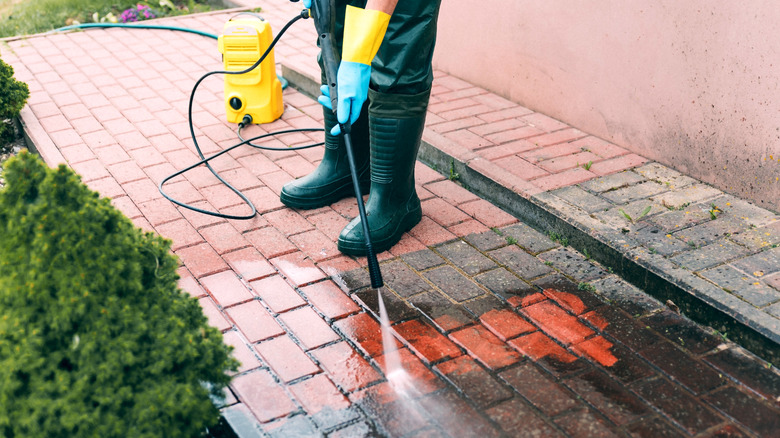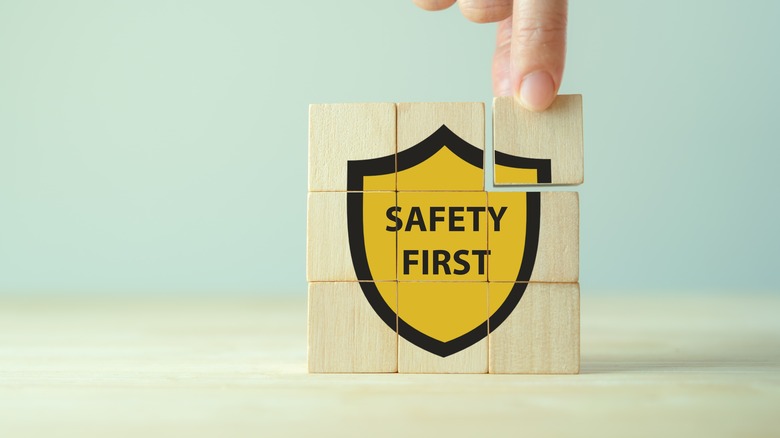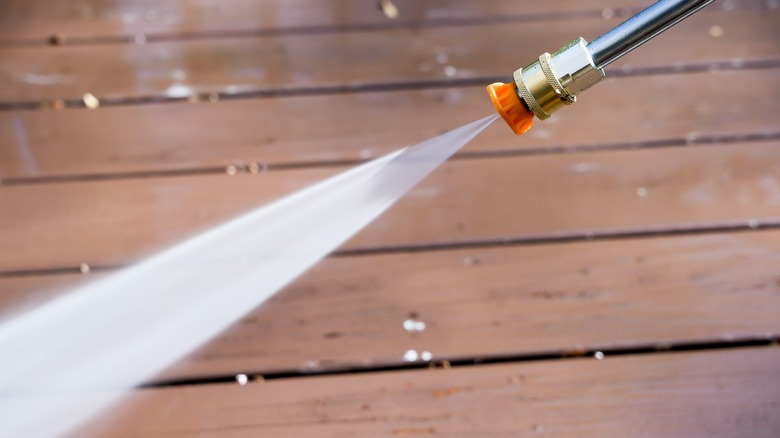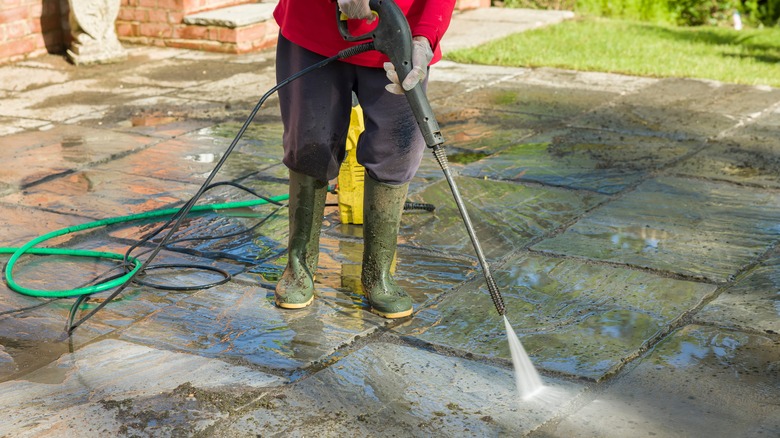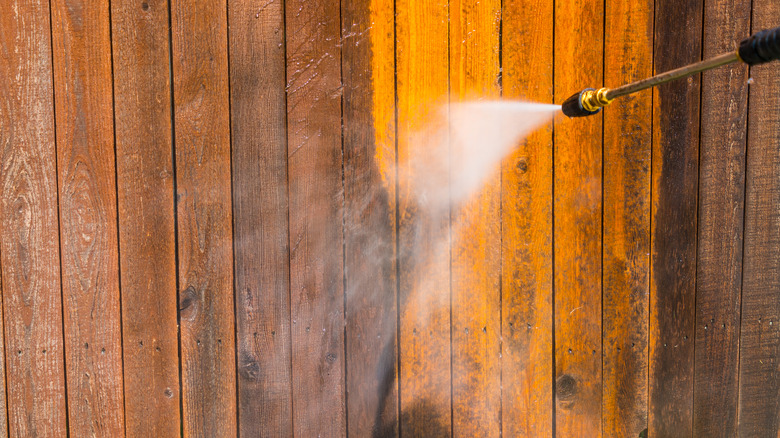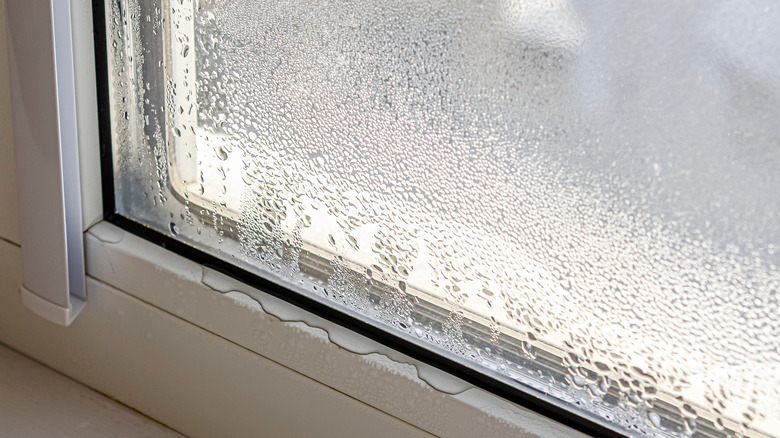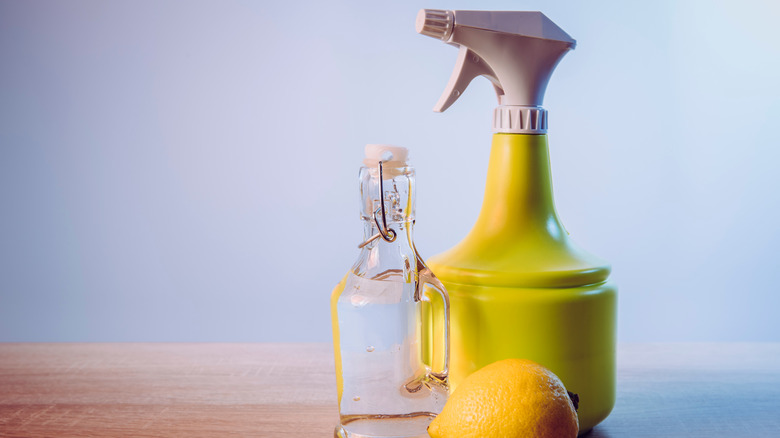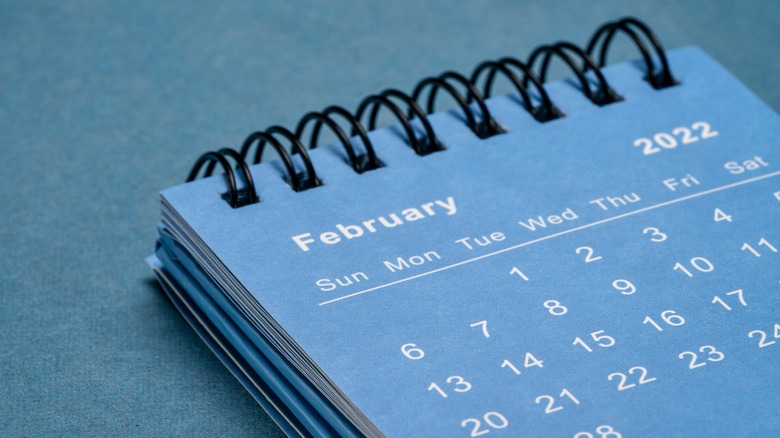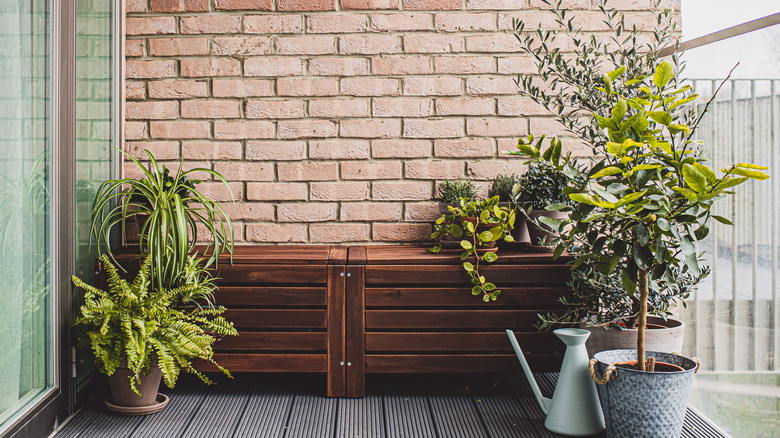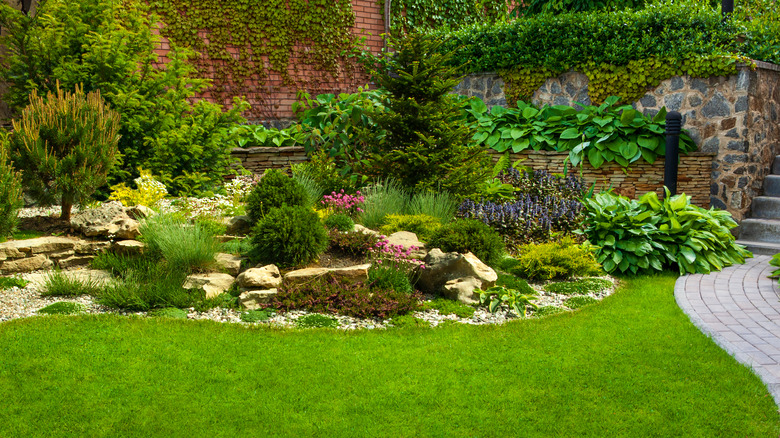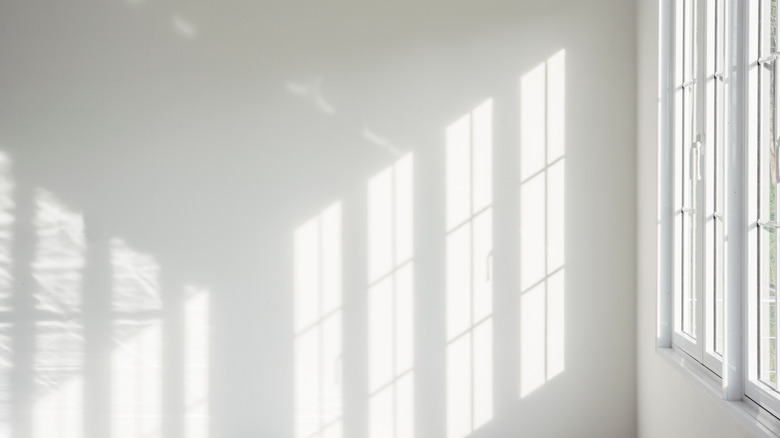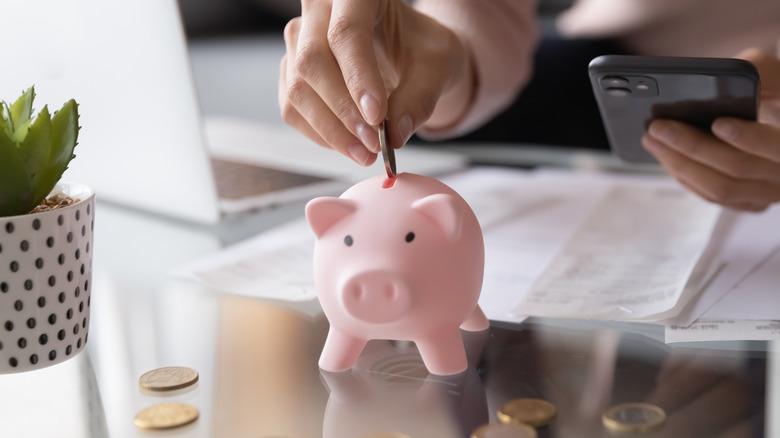Everything You Need To Know To Pressure Wash Your Own Home
Pressure washing your home may feel like a large project to DIY, and in some senses, it is! But that doesn't make it an impossible task, and there are definite benefits associated with getting this task done. Red Door Power Wash explains that there are a range of upsides to power or pressure washing your home on a regular basis. For instance, it helps maintain your property's value, increases the curb appeal of your home, and removes cobwebs.
Pressure washing can also improve the overall health conditions of your home by removing things like particles, algae, and mildew that tend to accumulate on the exterior of your home. When you and your family members are exposed to these substances, it can pose a health risk, particularly for those afflicted with asthma or any other respiratory illnesses. As you can see, pressure washing is a fruitful effort that will both improve the look of your home and can also help your quality of living!
You should take some preparatory steps first
Something that's important to know about pressure washing your home is that you need to take measures before beginning in order to prepare for this DIY task. Advanced Cleaning offers a range of steps you can take to do so. First, make sure doors, windows, and other openings around your home are properly closed up. This is because the pressure associated with this type of cleaning is stronger than a gusty rainstorm, and you certainly don't want this fluid making its way into your home.
Next, make sure that you pay attention to any exterior power outlets around your home. These are easy to miss, but it's important to cover them and ensure nothing is plugged in that can pose an electrical risk.
Finally, make sure that kids and pets are well out of the way for this project. They should stay inside to avoid safety risks as a pressure washer could hurt a child or animal if they get in the way of the process.
You can't pressure wash every inch of your home
It'd be easy to think that you can pressure wash every part of the exterior of your home if you haven't done it before. However, that's not the case. Angi explains what can't — and can — be pressure washed on your home. Knowing this before you get started is vital to know so that you don't end up ruining any elements of your exterior.
Areas that shouldn't be pressure washed are any areas made of stucco or brick siding or decks that are constructed out of composite materials or wood that has been painted or stained. Cars should also not be pressure washed nor should outdoor light fixtures, electrical panels, HVAC units, windows, or gutters.
Areas of your home that can be pressure washed include anything made of vinyl, aluminum, or cement. Things like walkways, patios, and driveways that are made of cement are also safe to pressure wash. Kids' outdoor toys as well as outdoor furniture that's made of either composite wood or plastic can be pressure washed safely. Decks made of natural wood that are not stained can also be pressure washed.
Make sure you're using the right machine
A big area of consideration when it comes to power washing is ensuring that you're using the right machine to get the job done. Consumer Reports gives a solid overview on choosing the right pressure washer for your home. There are different types of pressure washers worth considering. First up are gas-powered pressure washers, which make it simple to clean a large area, but can be quite noisy and heavy. Next, electrical-powered pressure washers are better for smaller-scale washing jobs and they're easy to start and stop. However, they are more difficult to clean. Finally, battery-powered pressure washers are a feasible option. An upside of this option is that they're a lower-power option, which makes them more versatile in some ways. However, they're not suitable for a deep cleaning of the full exterior of your home.
Another thing to consider is whether you want to rent or buy a machine for this DIY home project. If you plan to do a lot of power washing, it could be worth the investment to own one. However, renting has its own upsides, as it is a more affordable option for a one-off project and mitigates the need for you to store the machine.
Know the safety measures you should take before you start
It's of utmost importance to operate a pressure washer safely. These are powerful machines that could do harm if you don't take the appropriate measures. This is so vital that the CDC has spoken up on the matter. The organization notes that you should never use a pressure washer as a means for moving objects, notes that you should avoid using a gasoline-powered washer in a closed off area, and to ensure the machine is plugged into a grounded receptacle. If you need to utilize an extension cord to plug in the machine, make sure that it's approved to be used in wet locations to avoid electrical issues.
Also, wear rubber-soled shoes that keep your feet dry and help prevent slipping and falling in a wet environment. If an issue arises while using a pressure washer, don't delay calling 911 immediately and always thoroughly wash your hands before treating an open wound. Wounds should be thoroughly cleaned and covered with a bandage or clean cloth to ward off infection.
Be sure you select the right nozzle
Choosing the right nozzle for your pressure washer is the secret behind exterior cleaning success! Powerwash.com explains that the way that you change the pressure while washing is by changing the nozzle size, which many users fail to realize. This video demonstrates what happens when you use the incorrect nozzle. The larger nozzle used, the lower the pressure will be when operating the machine. Many times, people will assume that their pressure washer is not operating correctly because it's not holding a high amount of pressure. But frequently, this is due to using that large nozzle when they should be using a smaller one in order to attain the desired amount of pressure and to have the most effective washing experience.
Using the right nozzle will allow you to work smarter, not harder, on this DIY project, making for a more efficient process and a cleaner exterior for your home.
Figure out how to nail the washing technique
It may take a bit to get the hang of the washing technique with a pressure washer, especially if you haven't used one before. Paint Life TV offers a useful tutorial on how you can effectively use a pressure washer to make your home's exterior look like new! The first tip they offer is to use a rotating nozzle for cleaning. These clean faster and in a stronger manner when used correctly. When using these, start away from the surface you're cleaning and slowly move the nozzle closer to the surface you're looking to clean. The video notes that it's useful to start about a foot and a half away from the surface you're cleaning. Straight nozzles are better used to knock down things like a bee or hornet's nest.
Another tip the video offers is to avoid pressure washing on a wooden surface. This is because as soon as it's wet, the surface will become extremely slippery. This is especially important if you're considering climbing on your roof to do some cleaning. This is a huge safety risk.
Make sure you have the right tools and materials
Having all of the right tools and materials will make it easier to complete your pressure washing DIY project. Paint Life TV offers some advice as to which accessories you should have on hand to help make your project more efficient. First, they suggest a rotating nozzle as it's a more effective and faster cleaner. This can be used on wood, metal, fences, siding, and more. Another tool they referenced that's worth having is a six foot extender to make it easier to get to hard-to-reach spots as you clean. These extenders usually flex, which makes it simpler to maneuver the nozzle to get to every spot you might want to clean.
Of course, having things like the pressure washing machine itself, the correct nozzles, cleaning solution, non-slip shoes, and plastic to cover plants and landscaping are other basic materials you'll need to get the job done.
Understand pressure washing vs. power washing
Pressure washing and power washing are terms that are commonly used interchangeably. However, there are key differences between these two methods of cleaning the exterior of your house. In fact, there's one particular difference to be noted. As Shack Shine explains, both of these machines clean with a large amount of pressure and they both utilize water.
However, the difference is that power washers utilize a heating element in addition to a stream of high-pressure water. The heating element is used to heat up the water, which makes a large difference in the way that it is used as compared to a pressure washer. The use of hot water makes a power washer a great tool to get stubborn, stuck on debris, dirt, and other materials from the exterior of a home. The element of heat is also useful in unsticking chewing gum from a driveway or walkway. Finally, the heat helps remove grease stains from the driveway or even a garage floor.
Verify that you're using the right cleaning solution
You'll need to couple your power washer with a cleaning solution in order to maximize its effectiveness. PressureWashr lists some important items to know about choosing the right cleaning solution to make this DIY project a success. The source notes that using a cleaning solution is the best way to make your pressure washer more efficient. Someone looking to pressure wash their home on a one-off basis may want to pop over to the hardware store and simply buy a gallon of pre-mixed cleaning solution. You'll want to verify that the solution you purchase is both environmentally-friendly and safe to use around your pets and garden.
You'll want to look for a solution that has sodium hypochlorite, which acts as both a stain remover and disinfectant. Also look for sodium hydroxide in the solution you choose as it's good for dissolving grease and fats.
Make sure this is the best time of year to do it
Since pressure washing takes quite a bit of effort, you'll want to make sure you are getting the most bang for your buck out of the project, right? That means you need to choose the right time of year to do it. CHS Clean notes that you'll want to time your pressure washing for a time when there'll be fewer complications and for when the effects will last as long as possible. The site shares that whenever you notice build-up on the exterior of your home is a good time to pressure wash, but winter is certainly not the best time to do so, as it can lead to ice buildup, which is not something you want around your home.
Once the weather turns and warms up with the arrival of spring, it's a much better time to pressure wash your home and clear the debris and grime that a snowy winter brings. Plus, it'll be a way more pleasant time to be outside to do the project then, too.
Understand what the material of your home needs
The material of your home does make a difference in the way you will need to clean it in order to keep it looking its best and in its best physical condition. Not all homes are created equal when it comes to pressure washing! Labor Panes provides a wonderful guide to the different types of siding of a home in relation to pressure washing. For instance, the site notes that while wood siding is one that people love the aesthetic of for their home, it's also tricky to maintain. That's because it's more prone to damage than other materials and can be harmed by a pressure washer on too high of a setting. Additionally, wood is susceptible to rotting and warping thanks to moisture.
On the other hand, vinyl siding is better at holding its integrity in harsh climates. It does this while easily mimicking the look of wood. It's also a lower maintenance material that is often more durable.
Cover your greenery and landscaping before starting
Before you start the pressure washing process, you want to ensure that you won't ruin your landscaping that you likely work very hard to maintain. Pressure washing your home is to increase its curb appeal, and you'll accomplish the opposite if you ruin your landscaping in the process. Pressure Points talks about the importance of doing this before you start using your pressure washer. A simple way to do this is to use a plastic sheet as a cover. However, do so carefully, as leaving shrubs and plants covered for too long can be quite damaging. That's because it results in a lack of air supply, which plants need to survive. To avoid this issue, cover the plants in the area you're immediately pressure washing, then moving the plastic cover to the next section that's going to be cleaned. This may be more cumbersome of a task, but it's a much safer method for your plants.
As another consideration for your plants, make sure that you use a detergent that is environmentally-friendly and that doesn't contain bleach. Finally, water your plants thoroughly before you start pressure washing, then rinse them off gently after for best results.
Seal doors and windows, too
Water from your pressure washing project can creep into your home via windows and doors if you're not careful during the process. To avoid this unwanted nuisance, seal doors and windows before you get started. This will help your household stay dry while your home's exterior gets clean! Windows Plus shares more about how you can have a smooth process while using your pressure washer. For instance, the site notes that you should spray the water from an angle and start off to one side with the spraying process.
This is helpful for several reasons. First off, it's a better method of lifting dirt and loose paint than just spraying the nozzle straight ahead. Additionally, this method helps ensure that the pressure is not overly high, which could result in damage to your windows and even broken glass. That would infiltrate your home with water, which you definitely don't want.
Be prepared for what this DIY project costs
Finally, understanding the cost of this project is something you're likely interested in as you prepare to embark on your pressure washing journey. Ownerly spells out what DIYers should expect to pay to get the job done. First, they spell out what it costs to hire a professional to do the job. On the lower end, a professional pressure washer will cost about $150. On the higher end, it can cost up to a whopping $2,500 for this project. Obviously, this depends largely on the size of your home and how many stories it is.
The site also shares how much it costs on average to rent a pressure washer. These cost between $40 and $100 per day in most cases. To buy one, electric pressure washers range between $100 and $400 while gas pressure washers will cost between $300 and $600. If you're willing to invest the time into washing your home on a regular basis, it could be well worth the investment of owning a pressure washer as you'll be able to use it time and time again.
